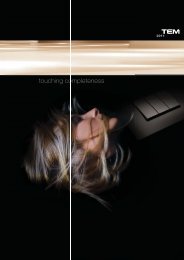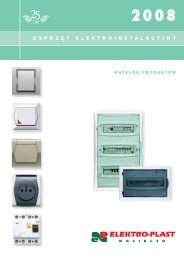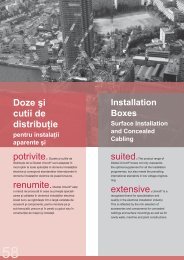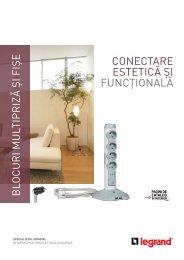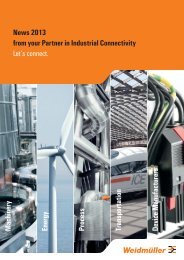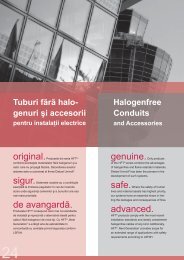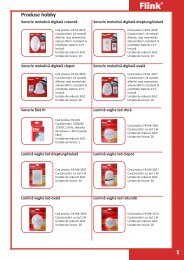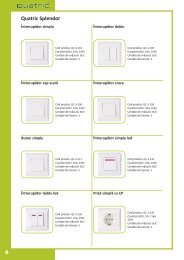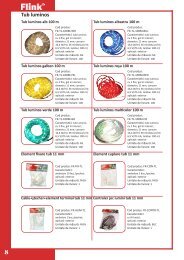Switch-Mode and Uninterruptible Power Supplies, Electronic Fuses ...
Switch-Mode and Uninterruptible Power Supplies, Electronic Fuses ...
Switch-Mode and Uninterruptible Power Supplies, Electronic Fuses ...
You also want an ePaper? Increase the reach of your titles
YUMPU automatically turns print PDFs into web optimized ePapers that Google loves.
Glossary<br />
Glossary/Technical appendix<br />
Glossary<br />
A<br />
AC/DC converter<br />
Ambient temperature (operational)<br />
Conventional switched-mode power supplies generate a DC voltage from an<br />
AC voltage. For this reason they are sometimes also called AC/DC converters.<br />
Such devices are increasingly compatible for use with DC input voltages.<br />
The primary <strong>and</strong> secondary sides are typically electrically isolated.<br />
The ambient operating temperature (the min. <strong>and</strong> max. values) together with<br />
the output current <strong>and</strong> voltage ratings can be used to describe the power<br />
capabilities of a power supply unit.<br />
W<br />
B<br />
Burst<br />
C<br />
Class of protection<br />
Connecting power supply units<br />
in parallel<br />
Cooling<br />
A burst is a quick low-power burst pulse which can, for example, simulate<br />
welding equipment phenomena. Similar phenomena can also result from<br />
switching operations on the mains supply. This test can be used to demonstrate<br />
immunity against quick transients.<br />
Electrical equipment is classified according to varying classes of protection.<br />
These classes define the particular safety measures that are required to avoid<br />
an electrical shock. The most widely used power supplies correspond with<br />
protection class I. The basic requirement of protection class I is for a basic<br />
insulation <strong>and</strong> for the earthing of all conductive housing parts. If the basic<br />
insulation fails, then the earthed conductive housing serves to prevent an<br />
electrical shock. For this reason, devices in protection class I are equipped with<br />
an earth (PE) connection.<br />
<strong>Power</strong> supplies can only be connected in parallel when this is clearly permitted<br />
by the manufacturer. Parallel connections are then normally tied to certain<br />
conditions. This is a typical way to increase the output power (for example, when<br />
extending a facility). <strong>Power</strong> supplies are also wired in parallel in order to design<br />
redundant power supply systems. The parallel circuit is not wired straight though<br />
but connects using decoupling diodes.<br />
➝ Redundancy<br />
Cooling is used by components or devices to prevent them from overheating. A<br />
variety of cooling strategies are available – two of the most common are natural<br />
<strong>and</strong> forced-air cooling. Natural (convection-based) cooling takes advantage of the<br />
natural air currents. Manufacturers must then ensure that there is sufficient air<br />
flow by specifying the clearance gaps <strong>and</strong> mounting positions that are required<br />
above <strong>and</strong> below the ventilation openings. Forced-air cooling normally uses a fan<br />
to dissipate any heat that has been generated. When fans are used in a device,<br />
they have the effect of increasing the likelihood of device outages. For this<br />
reason, a power supply with natural cooling methods is generally preferred.<br />
W.6 1366860000 – 2013



